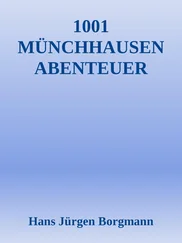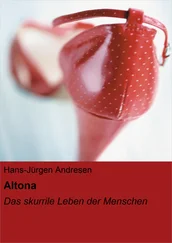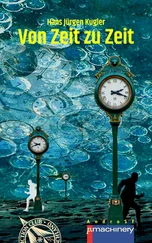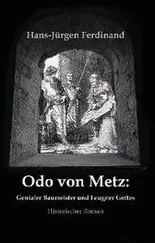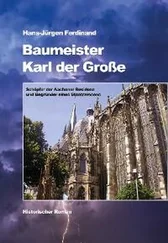7.Hoheisel U, Reinohl J, Unger T, Mense S. Acidic pH and capsaicin activate mechanosensitive group IV muscle receptors in the rat. Pain 2004;110:149–157.
8.De Boever JA, Carlsson GE. Etiology and differential diagnosis. In: Zarb GA, Carlsson GE, Sessle BE, Mohl ND (eds). Temporomandibular Joint and Masticatory Muscle Disorders, ed 2. Copenhagen: Mosby, 1994:171–187.
9.LeResche L, Saunders K, Von Korff MR, Barlow W, Dworkin SF. Use of exogenous hormones and risk of temporomandibular disorder pain. Pain 1997;69:153–160.
10.Stohler CS. Masticatory myalgias. Emphasis on the nerve growth factor-estrogen link. Pain Forum 1997;6:176–180.
11.Lam DK, Sessle BJ, Cairns BE, Hu JW. Neural mechanisms of temporomandibular joint and masticatory muscle pain: A possible role for peripheral glutamate receptor mechanisms. Pain Res Manag 2005;10:145–152.
12.Howard JA. Temporomandibular joint disorders, facial pain, and dental problems in performing artists. In: Sataloff RT, Brandfonbrener AG, Lederman RJ (eds). Textbook of Performing Arts Medicine. New York: Raven, 1991:111–169.
13.Türp JC. Temporomandibular Pain. Clinical Presentation and Impact. Berlin: Quintessenz, 2000.
14.Türp JC, Alpaslan C, Gerds T. Is there a greater mandibular movement capacity towards the left? Verification of an observation from 1921. J Oral Rehabil 2005;32:242–247.
15.Gerber A. Logik und mystik der kiefergelenksbeschwerden. Schweiz Monatsschr Zahnmed 1964;74:687–697.
16.Dworkin SF, LeResche L. Research diagnostic criteria for temporomandibular disorders: Review, criteria, examinations and specifications, critique. J Craniomandib Disord Facial Oral Pain 1992;6:301–355.
17.Schiffman E, Ohrbach R, Truelove E, et al. Diagnostic criteria for temporomandibular disorders (DC/TMD) for clinical and research applications: Recommendations of the International RDC/TMD Consortium Network and Orofacial Pain Special Interest Group. J Oral Facial Pain Headache 2014;28:6–27.
18.Okeson JP. Bell’s Oral and Facial Pains, ed 7. Chicago: Quintessence, 2014.
19.Merskey H, Bogduk N (eds). Classification of Chronic Pain, ed 2. Seattle: IASP, 1994.
20.Von Korff M, Ormel J, Keefe FJ, Dworkin SF. Grading the severity of chronic pain. Pain 1992;50:133–149.
21.Nilges P, Essau C. Depression, anxiety and stress scales: DASS—A screening procedure not only for pain patients [in German].Schmerz 2015;29:649–657.
22.de Leeuw R, Klasser GD. Orofacial Pain: Guidelines for Assessment, Diagnosis, and Management, ed 5. Chicago: Quintessence, 2013.
23.Greene CS. Managing the care of patients with temporomandibular disorders: A new guideline for care. J Am Dent Assoc 2010;141:1086–1088.
24.Hugger A, Schindler HJ, Bohner W, et al. Therapy of temporomandibular joint pain: Recommendations for clinical management [in German]. Schmerz 2007;21:116–130.
25.Schindler HJ, Türp JC, Sommer C, Kares H, Nilges P, Hugger A. Therapy of masticatory muscle pain: Recommendations for clinical management [in German]. Schmerz 2007;21:102–115.
26.Ebrahim S, Montoya L, Busse JW, Carrasco-Labra A, Guyatt GH. The effectiveness of splint therapy in patients with temporomandibular disorders: A systematic review and meta-analysis. J Am Dent Assoc 2012;143:847–857.
27.Fricton J, Look JO, Wright E, et al. Systematic review and meta-analysis of randomized controlled trials evaluating intraoral orthopedic appliances for temporomandibular disorders. J Orofac Pain 2010;24:237–254.
28.Klasser GD, Greene CS. Oral appliances in the management of temporomandibular disorders. Oral Surg Oral Med Oral Pathol Oral Radiol Endod 2009;107:212–223.
29.Michelotti A, Iodice G, Vollaro S, Steenks MH, Farella M. Evaluation of the short-term effectiveness of education versus an occlusal splint for the treatment of myofascial pain of the jaw muscles. J Am Dent Assoc 2012;143:47–53.
30.Hugger A, Schindler HJ, Türp JC, Hugger S. Pharmaclogical therapy of temporomandibular joint pain [in German]. Z Evid Fortbild Qual Gesundhwes 2013;107:302–308.
31.Sommer C. Pharmacology of orofacial pain [in German]. Schmerz 2002;16:381–388.
32.Kraaijenga S, van der Molen L, van Tinteren H, Hilgers F, Smeele L. Treatment of myogenic temporomandibular disorder: A prospective randomized clinical trial, comparing a mechanical stretching device (TheraBite®) with standard physical therapy exercise. Cranio 2014;32:208–216.
33.Hellmann D, Schindler HJ. Koordinatives training zur funktionellen rehabilitation des kraniomandibulären systems. Quintessenz 2015;66:1499–1507.
34.Kaiser U, Nilges P. Behavioral concepts in the treatment of orofacial pain [in German]. Schmerz 2015;29:179–185.
35.Cho SH, Whang WW. Acupuncture for temporomandibular disorders: A systematic review. J Orofac Pain 2010;24:152–162.
36.La Touche R, Goddard G, De-la-Hoz JL, et al. Acupuncture in the treatment of pain in temporomandibular disorders: A systematic review and meta-analysis of randomized controlled trials. Clin J Pain 2010;26:541–550.
37.Craane B, Dijkstra PU, Stappaerts K, De Laat A. One-year evaluation of the effect of physical therapy for masticatory muscle pain: A randomized controlled trial. Eur J Pain 2012;16:737–747.
38.Zhang Y, Montoya L, Ebrahim S, et al. Hypnosis/relaxation therapy for temporomandibular disorders: A systematic review and meta-analysis of randomized controlled trials. J Oral Facial Pain Headache 2015;29:115–125.
39.Türp JC, Jokstad A, Motschall E, Schindler HJ, Windecker-Gétaz I, Ettlin DA. Is there a superiority of multimodal as opposed to simple therapy in patients with temporomandibular disorders? A qualitative systematic review of the literature. Clin Oral Implants Res 2007;18(suppl 3):s138–s150.
Конец ознакомительного фрагмента.
Текст предоставлен ООО «ЛитРес».
Прочитайте эту книгу целиком, купив полную легальную версию на ЛитРес.
Безопасно оплатить книгу можно банковской картой Visa, MasterCard, Maestro, со счета мобильного телефона, с платежного терминала, в салоне МТС или Связной, через PayPal, WebMoney, Яндекс.Деньги, QIWI Кошелек, бонусными картами или другим удобным Вам способом.


